Planting and growing Swamp milkweed is fairly easy, even for the beginner gardener. This native plant offers a special presence in the garden, and draws droves of pollinators and beautiful butterflies to the garden space. Learn how to grow Swamp milkweed, and enjoy the multitude of benefits that this plant has to offer.

I would never have imagined how much fun growing Swamp milkweed would be, and was pleasantly surprised by the experience. The plant is a beauty in it's own right, yet it was the visitors that it brought to the garden, that made it the highlight of this year's gardening season.
The bees and butterflies enjoyed it immensely, and were fun to photograph feeding on the nectar of the milkweed plants.
The most anticipated visitors were the Monarchs, and before long they arrived and made their presence known. Swamp milkweed is an important host plant for the Monarchs, and if you plant it, they will come.

What Is Swamp Milkweed?
Swamp milkweed is a herbaceous perennial plant from the Family Apocynaceae, and Genus Asclepias.
The species name for swamp milkweed is Asclepias incarnata.
Swamp milkweed are native plants. These native milkweeds are distributed throughout central and eastern Canada and the United States.
A closer look at the distribution areas can be found on the Lady Bird Johnson Wildflower Center website, under the plant database for Asclepias incarnata.
"Swamp Milkweed" is one of the common names for this plant.

There are a number of other common names that are also used for swamp milkweed. These include rose milkweed, swamp silkweed, rose milkflower, and white Indian hemp.
It is easy to see the origins for some of these names:
- Swamp milkweed prefers moist locations, such as swampy areas, thus the "swamp milkweed" name.
- The flowers on the swamp milkweed plant have rose colored blossoms, lending to the "rose milkweed" and "rose milkflower" names.
- Break open a leaf or stem, and a milky sap oozes from the injured plant, leading to the name "milkweed" and "milkflower".
- Look at the seeds when they mature and lift from the seed pods in fall, carried on beautiful silk-like comas. This most likely contributed to the common name "swamp silkweed".
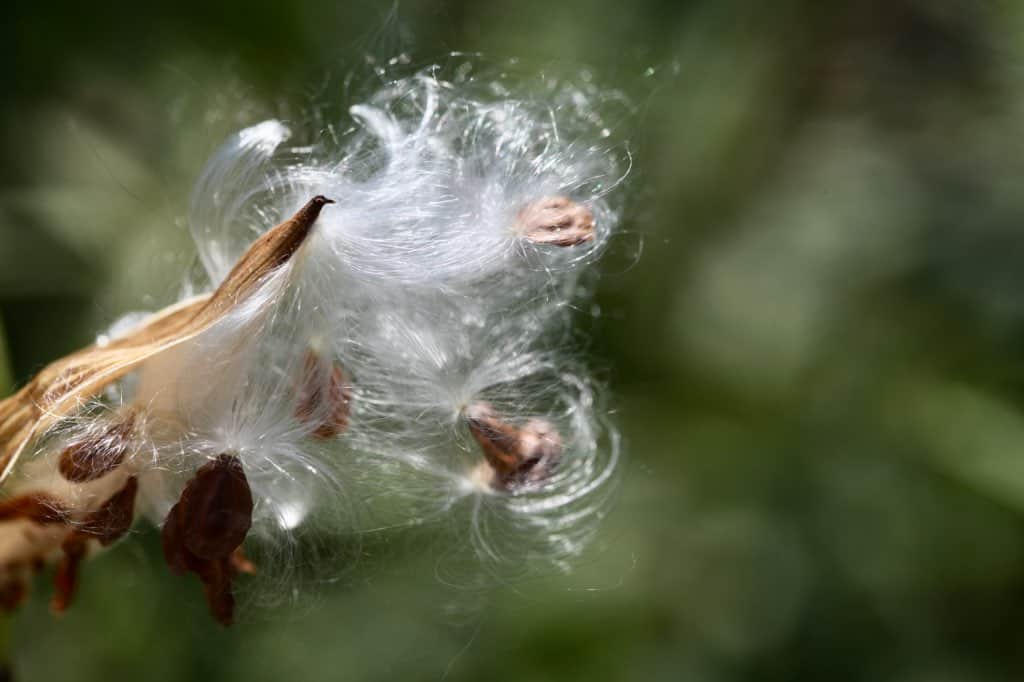
Swamp Milkweed And Monarch Butterflies
Swamp milkweed, like many other species of milkweed, is a host plant for monarch butterflies, and a food source for the monarch caterpillars.
According to the US Department of Agriculture, swamp milkweed is one of the preferred milkweed plants of female monarchs. This species of milkweed is one of several on which female monarchs tend to lay the most seed.
Common milkweed is the other species for highest average egg laying by the monarchs.
These perennial plants are perfect choices for butterfly gardens.

Now let's look more closely at the plant itself.
Swamp Milkweed Flowers
- The individual flowers of swamp milkweed are formed on clusters called racemes. These clusters contain short stalks which bear many small pink flowers at the tips.
- The flowers of swamp milkweed are typically found in shades of pink and purple, although the plants can also have white flowers. Each small flower within the larger cluster of blooms has five petals, and a raised central crown.
- There are many flowers within the larger flower head, which presents as a light and airy flower cluster when in full bloom.
- These flowers are a source of nectar for monarchs, as well as for many other beneficial insects, including bees and other types of butterflies, and many other beneficials.
- I have also observed hummingbirds at the milkweed, for brief periods of time.

Swamp Milkweed Leaves
- The leaves of swamp milkweed are elongated, lance shaped and pointed.
- Each leaf is attached to the main stem by a shorter stem. The lance-shaped leaves are positioned in pairs, and the leaves in each pair grow opposite each other along the stem.

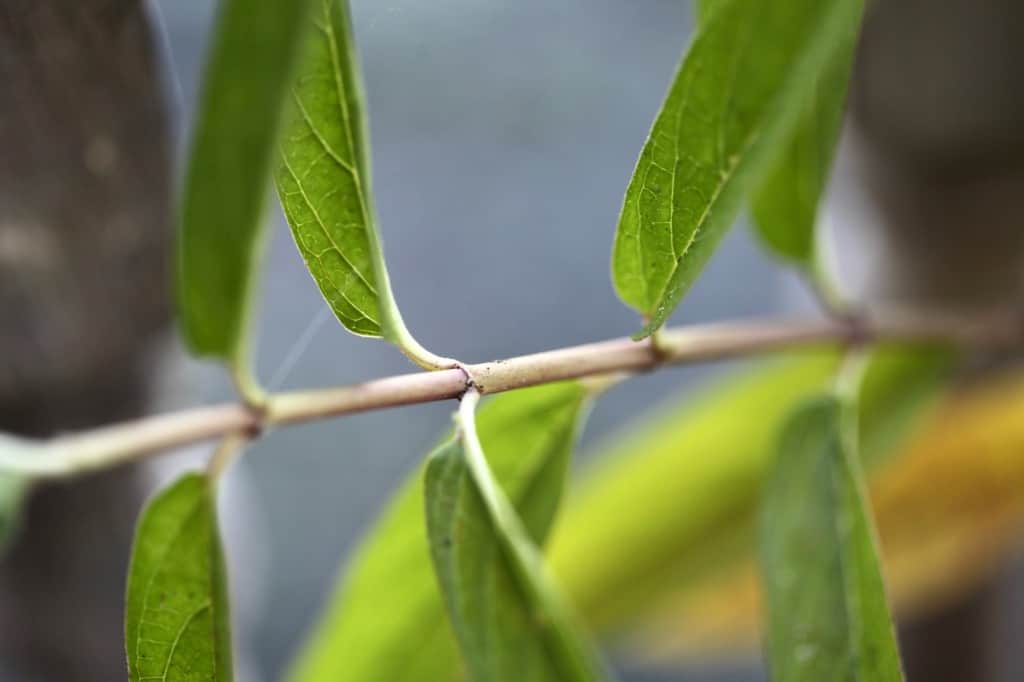
- Leaves vary in length from 3 to 5 inches on a mature plant.
- Monarch butterfly females lay their eggs on the leaves of the milkweed plants. Generally the eggs are found on the undersides of the leaves, however I have also found them on the top surfaces as well.
- Monarch caterpillars are born on the leaves of the swamp milkweed plant. The young caterpillars readily eat the leaves, which is their only food source, once they emerge from the eggs.
- As the caterpillars devour the leaves, the plant will be stimulated to produce more leaves from adjacent leaf nodes, for continued growth.

Swamp Milkweed Stems
- Swamp milkweed is a herbaceous perennial, and the plant dies back into the ground in winter.
- The stems re-emerge in late spring.
- Stems on second year growth become much stronger and sturdier than the stems of first year seedlings.
- The stems are branched, and can grow up to five feet in height at maturity.

Swamp Milkweed Seeds And Comas
- After flowering and pollination has occurred, multiple green pointed seed heads form within each milkweed flower cluster.
- The pods are intriguing and artistically composed.

- Inside each pod the swamp milkweed seeds will grow until they are mature.
- At maturity in late summer, the pods will crack open, revealing brown seeds which are attached to shiny silk-like comas. These silky appendages play a role in the dispersal of the seeds.
- Swamp milkweed seeds are brown, oval shaped and papery. They are medium brown in color at maturity, although white when still immature.
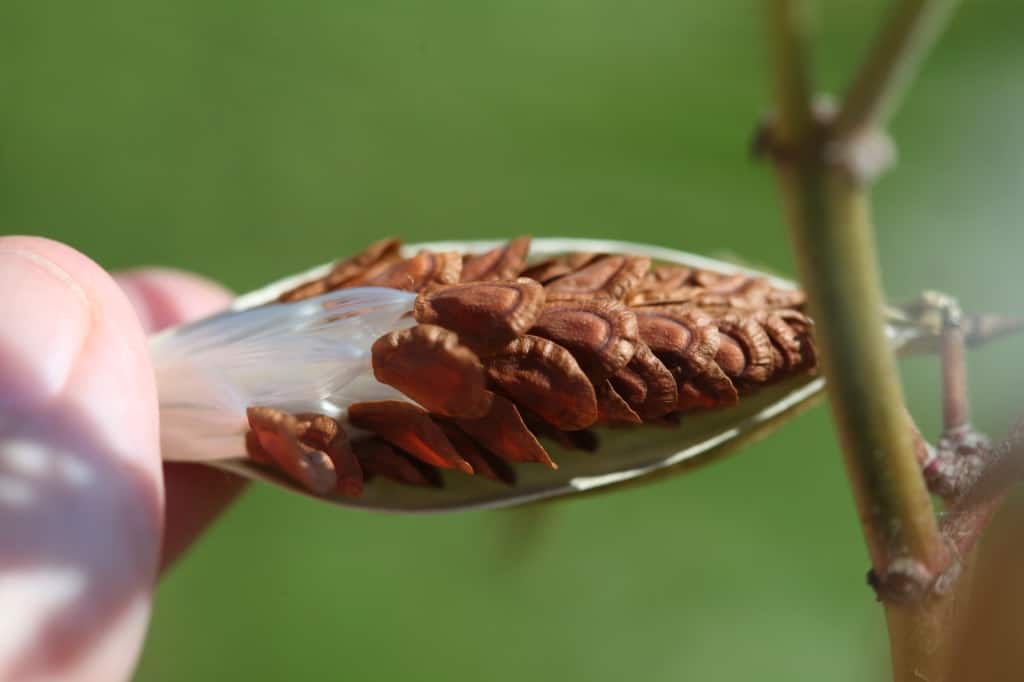

- Seeds measure approximately 1 cm in length.
- The silky coma is lightly attached to each seed at the top, forming a parachute-like structure that easily lifts and transports the seed, on the gentlest of breezes.
- The silky comas are very soft to the touch, and glisten in the sunlight.
- Be careful when harvesting and processing your swamp milkweed seeds, especially if processing indoors. The silk can easily float around an open room and make a bit of a mess if you are not careful.
- I did another post on harvesting milkweed seeds, which goes into the process of processing the seeds cleanly, preventing the silk from going everywhere.
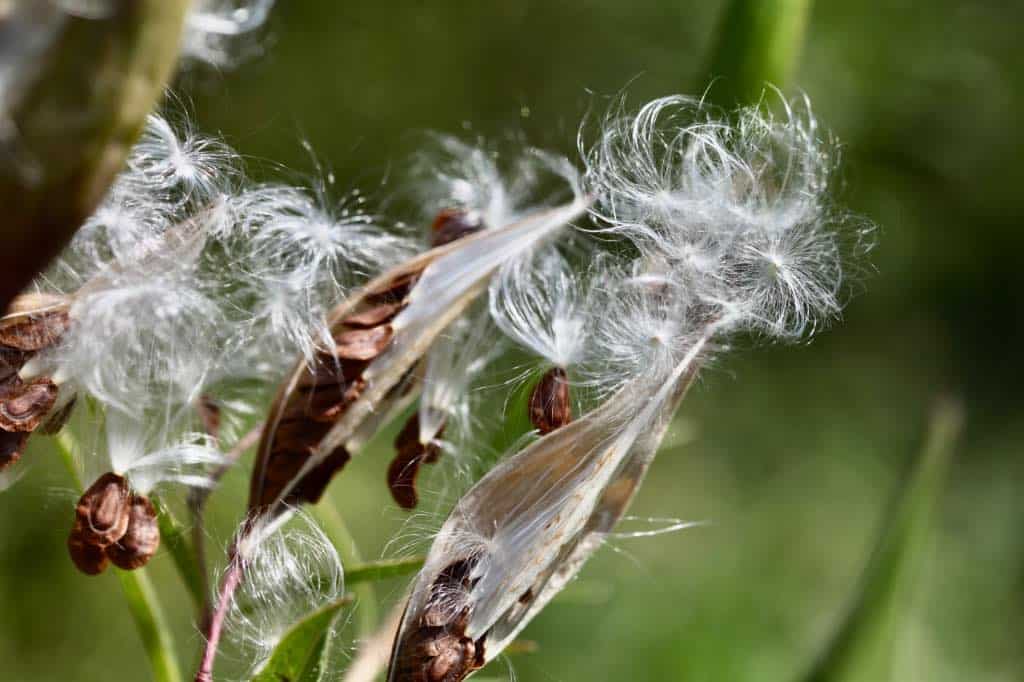
How To Grow Swamp Milkweed
Swamp milkweed is very easy to grow from seed, as long as the seeds are stratified, to help with germination. Seeds can be started inside in winter, winter sown in milk jugs, or direct sown. The seeds can also be incorporated into seed balls, for yet another easy planting and growing method.
I have grown milkweed by starting the seeds indoors in winter, as well as winter sowing in milk jugs. Both methods have proven to be very successful, and the resulting seedlings now grow in my present milkweed patch.
This year I allowed many seeds in the swamp milkweed patch to self sow. Time will tell if this endeavour is successful.
I have also made seed balls or seed bombs, containing swamp milkweed seeds, and have had great success using this method in seasons past.

Stratifying The Seeds
Planting milkweed seeds is fairly easy, with some methods being a little less work than others.
Swamp milkweed seeds generally require stratification, and you will get best germination results by first stratifying the seeds before planting. Stratification helps to break down the hard outer seed coat for better germination success.
If planting indoors, or planting outdoors in spring after the frost, remember to stratify the seeds prior to planting, for improved germination rates.
The stratification process involves a cool dry chill, or a cool moist chill, for approximately thirty days in the fridge. If planting outdoors in fall, or winter sowing, the seeds will be naturally stratified.

So let's have a look at each method for planting swamp milkweed seeds.
1. Starting The Swamp Milkweed Seeds Indoors

- I generally start flower seeds indoors in cell trays, in late winter or early spring. This is one method that I use to start swamp milkweed seeds.
- Fill the cell tray cells with a soilless medium, and make a little indent at the top of each cell in the soil.
- Place a milkweed seed in the hole, and lightly cover the seed with more of the soilless medium, or vermiculite.
- Bottom water the tray, and keep the soil moist while germinating.
- Place the tray on a heat mat, and keep on the heat mat until there is approximately 60% germination of the seeds.
- Next place the tray under a grow light, and grow on until ready to be planted out in spring.
- Plant the seedlings out after your last frost date, and after the risk of frost has passed.
- Make sure to harden off the seedlings before planting them out into the garden.

2. Winter Sowing Swamp Milkweed Seeds
I absolutely love winter sowing, because it is easy and there's not much you have to do after the winter sown seeds are planted into the containers.
You don't have to water, except maybe in spring, if the containers are very dry, because the outdoor elements help to keep the containers watered.
There is no need for grow lights, as the plantings are already outside, exposed to the sunlight.
The swamp milkweed seeds will germinate outside, at the perfect time for your own USDA plant hardiness zone.
For more information on winter sowing in milk jugs, you can read all about it in the post WINTER SOWING IN MILK JUGS: COLD STRATIFICATION.

Method For Winter Sowing:
- Winter sowing is easy, and a great way to repurpose old milk jugs.
- Cut a milk jug or similar container in half, leaving a small area intact and still attached at the handle, to function as a hinge.
- Cut drainage holes in the bottom of the container with a sharp knife.
- Fill the container with a moistened soilless medium, and plant the seeds into the medium.
- Cover the seeds lightly with more soilless medium or vermiculite.
- Label the container with the variety of seeds and the date of planting, placing labels on both the inside and the outside of the container. I make sure to label in both areas, because sometimes the outer label gets washed off after being outside for months in the outdoor elements.
- Duct tape the two halves of the milk jug or container together.

- Make sure to leave the cap off the pouring spout, to allow for moisture to enter the container.
- Place the container outside in an open yet sheltered area, to experience the snow and freezing climate of winter.
- I make sure the containers are secured in a way that they are exposed to the elements, yet will not blow over. If the containers blow over, it can result in seeds being dislodged, and possibly being buried too deeply once the container is set upright again.
- In springtime the milkweed seeds will germinate, at just the right time for your growing area.
- After germination, and when the weather warms up, gradually expose the seedlings by opening the top of the container for periods of time. Then remove the top completely.
- When the swamp milkweed seedlings are about six to eight inches in height, they can be transplanted into the garden.

3. Planting Outdoors- Direct Sowing
- One of the reasons that I tend to avoid direct sowing in my own garden is because of the high weed pressure that we have at the farm.
- However direct sowing is a great method of planting swamp milkweed, if you do not have a lot of weed competition.
- Swamp milkweed is a hardy perennial, and the seeds can be planted directly into the garden in late fall or early spring.
- The outdoor elements as well as the freezing and thawing during the winter months, will contribute to a natural stratification of the seeds, allowing for improved germination rates.
- The new seedlings are also naturally hardened off, exposed to all of the outdoor climate automatically as they grow.

Method For Direct Sowing:
- To direct sow, sow the seeds into a prepared garden bed in fall or early spring.
- Cover the seeds lightly with the garden soil.
- Once germinated and growing, thin the plants to the correct spacing of approximately 1 ½ feet to 2 feet apart.
- Swamp milkweed at maturity can have a diameter of thirty to thirty six inches.
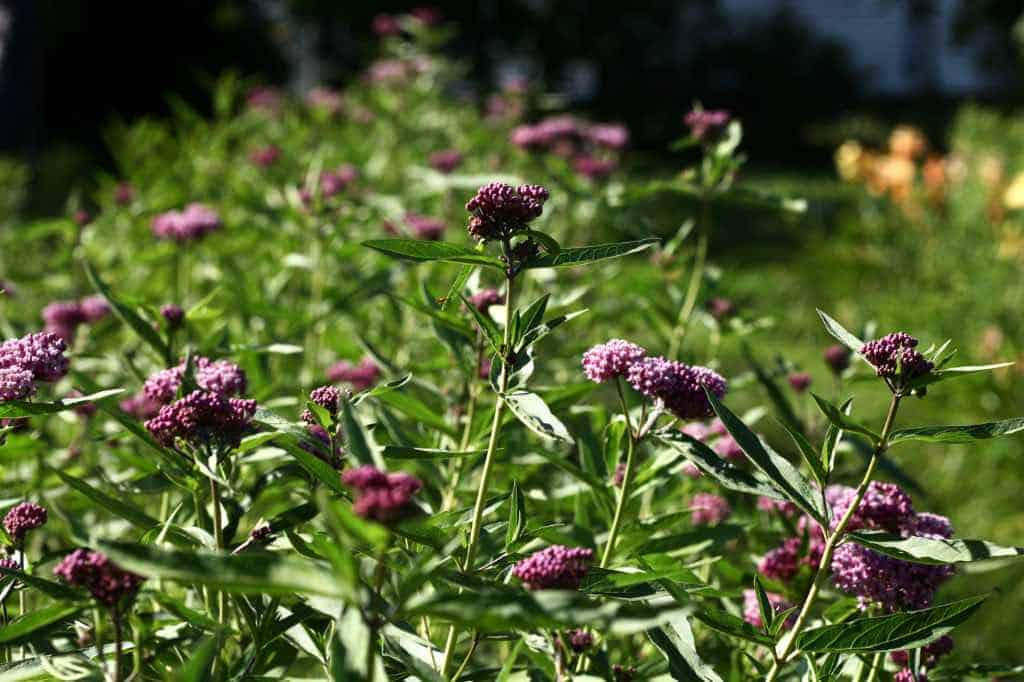
4. Planting Outdoors- Seed Balls
Making seed balls or seed bombs can be quite fun, although a little messy.
It feels like making mud pies, with a special goal in mind.
I did a post on seed balls, which includes some instructions on the process. You can read about it in this post: HOW TO MAKE SEED BALLS FOR THE GARDEN.
The wonderful thing about making swamp milkweed seed balls is that it is truly a set and forget sort of project. You make the seeds balls, add the milkweed seeds, and set them in the garden.
Remember to stratify the seeds before adding to the seed balls if you plan to set them out in spring. Otherwise set them outside in the winter or very early spring to become naturally stratified by the cold.
The seed balls are self contained growing centres, with everything the seeds need for survival except for moisture, which will be provided once they are placed outside into the garden.

Method For Making Swamp Milkweed Seed Balls:
- Gather the ingredients, which consist of clay, compost, and milkweed seeds.
- Mix together 5 parts clay with 3 parts compost.
- Add water to make the mixture muddy, and add just enough water to hold the ingredients together.
- Make the balls by rolling the moistened mixture between the palms of your hands.
- Dip the formed balls into a bowl with the milkweed seeds, and the seeds will cling to the moist clay and compost balls.
- Cover the seeds lightly with more of the muddy mixture, or just poke them into the balls with your finger or similar object.
- Allow the seed balls to dry.
- Place them outside in winter or early spring, in a place where you want your swamp milkweed to grow.
- Make sure to place the seed balls onto a spot where they will have direct contact with the soil below, rather than onto a solid surface or one in which the soil is occluded.


Planting Swamp Milkweed Seedlings Into The Garden
If you have planted swamp milkweed seeds indoors in winter, or planted outside in milk jugs, the new seedlings will need to be transplanted out into the garden.
The seedlings grown indoors will need to be hardened off before planting, to acclimatize them to the outdoor elements.
Seedlings that were winter sown will be naturally hardened off, because they have been growing outside. Lift the tops off the milk jugs or containers to give them some extra exposure time, to complete the hardening off process.
Plant into the garden after the danger of frost has passed.
Be careful when lifting the seedlings from the cell trays or containers, and try not to disturb the tap root of the plant.
Plant the swamp milkweed seedlings into a prepared garden bed, approximately one and one half to two feet apart, to allow for growth of the plants at maturity.
Planted into the garden in spring, the plants may produce a few select blooms in the very first season. Generally however, like with most other herbaceous perennials, the plants will bloom more readily in their second season of growth, and onwards.

Swamp Milkweed Care
Now let's discuss the best place to plant and grow Swamp milkweed in the garden, and some of the requirements for optimal growth.
Growing Zone
- Swamp milkweed is a species of milkweed that does well in the colder growing zones, and is hardy from zone 3 to 9.
- This milkweed plant grows well in our cooler zone 5b growing zone.
Light Requirements
- Grows best in a full sun location for best flowering results.
- Swamp milkweed will also grow in a partial shade location. The growing location should provide at least six to eight hours of direct sunlight per day.

Soil Requirements
- Swamp milkweed grows in a wide variety of soil types, including clay soil, sandy soil, loamy soil, and acidic soil.
- These plants will grow in average garden soil.
- We have our milkweed planted in full clay, and it is thriving in this soil.
Moisture Requirements
- As the name suggests, swamp milkweed will grow in a swampy and high moisture location, and prefers a moist soil.
- However, it will also grow in regular garden soil.
- We did not provide any extra water to our swamp milkweed growing in the field, and it grew well with just the moisture from the outdoor elements.
- Water the plants during a dry spell.

Pruning Or Deadheading
- Pruning or deadheading the swamp milkweed seed pods will help to prevent reseeding.

- If you don't mind the extra plants, there is no need to prune the plant. If you don't want more swamp milkweed to grow, the easiest way to control the plants is to prune off the seed pods.
- Pruning also involves pruning back the old milkweed stems, as part of winter or spring garden cleanup.
- All the stems and foliage will naturally die back into the ground in late fall and winter, however some remnants will remain on the ground until removed or composted.
- New growth will reemerge in late spring, to start fresh new plants for the new growing season.

Why Plant Swamp Milkweed?
Swamp milkweed is a very important plant for the survival of the monarch butterfly.
Migratory monarch butterflies were placed on the red list of endangered species this summer by the International Union For The Conservation Of Nature.
Knowing this fact made having monarchs in the garden this summer a very special presence indeed.
Having a swamp milkweed patch felt important, and left us believing that somehow our little patch might make a difference.
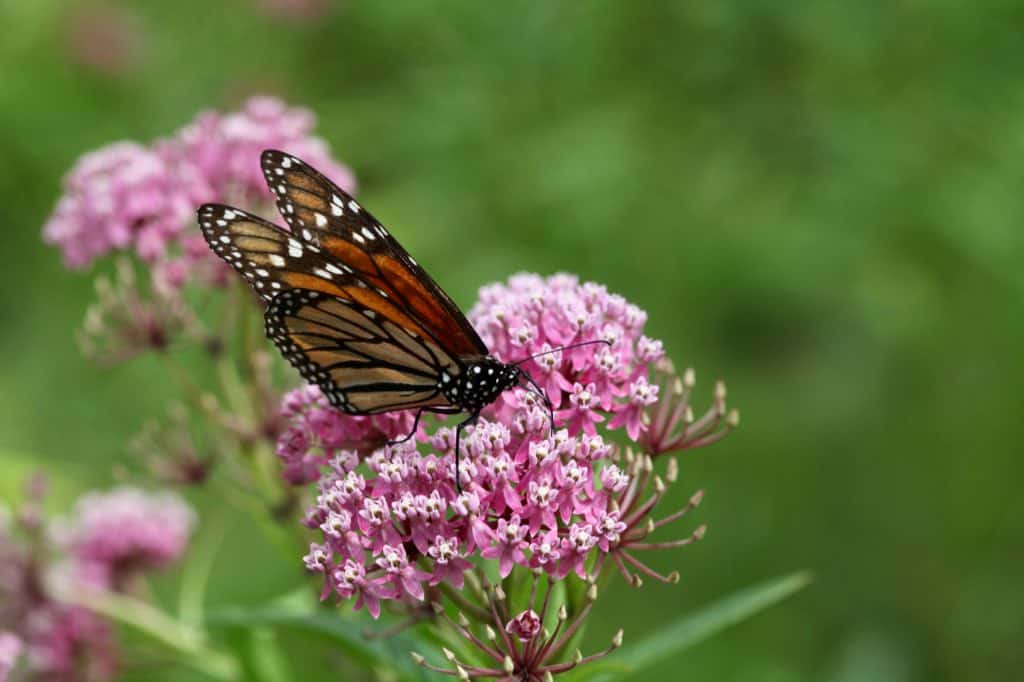
Since we have the space, I knew that planting even more milkweed would be an option, and helpful for these butterflies.
It was thrilling to see the butterflies discover the swamp milkweed, and then to watch the process of reproduction, starting with the chubby caterpillars munching on the milkweed leaves.

New generations appeared throughout the summer, and the milkweed patch was the place where the butterflies spent most of their time. The flower farm with lots of other flowers growing all around, also provided a feast for the monarchs.
The swamp milkweed patch, just two years old, produced loads of seeds at the end of the season for harvesting.
I collected many seeds, and then left the rest on the plants to disperse into the garden, to see how they would naturally self seed in the many nooks and crannies in the flower field.

Frequently Asked Questions:
How Long Does It Take Swamp Milkweed To Flower?
Swamp milkweed will flower usually in the second year of growth.
In the first year of growth the plants will be establishing themselves, and putting energy into plant growth and root development.
You may get a few small blooms in that first year on a few plants, which are always a bonus, because they are not anticipated.

Why Won't My Swamp Milkweed Bloom?
If you have just planted your milkweed plants this season, it is normal not to have any blooms.
As the plant matures it will begin to bloom, beginning in year two.
If the plant is in a shaded location, this will also have an effect on flowering.
For best blooming potential, plant in a full sun location.

Does Swamp Milkweed Spread In The Garden?
If left to it's own devices, swamp milkweed will readily spread throughout the garden.
Once the seed pods mature, they will crack open and the silky comas with seeds attached will lift into the air and be carried off into the breeze, to another location.
If you want to prevent the spread, it is very easy to remove the seed pods before they mature and break open.
The seed pods take a while to grow and mature, and pruning them early will eliminate any spread from the seed dispersal.

Conclusion
Swamp milkweed is an easy to grow, low maintenance plant.
It's also a very good choice for pollinator gardens.
The blooms of swamp milkweed attract many different types of pollinators to the garden.

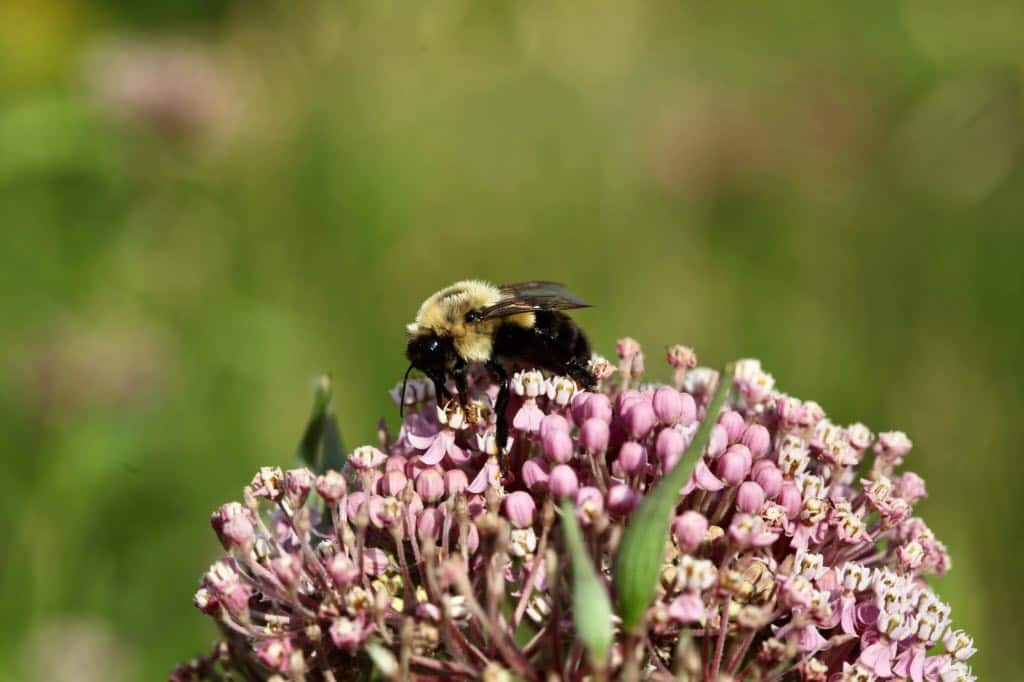
This perennial plant is also known to be deer resistant, although I am quite sure I have seen some evidence of nibbling deer this past summer.
This particular milkweed species is a favorite among female Monarch butterflies, as evidenced by an increased number of eggs laid on swamp milkweed plants.
It's also an important food source for monarch caterpillars.
The monarch butterfly population is at risk, and planting milkweed in the garden is especially important these days, even if a gardener only plants one or two plants.
I am planning to plant more swamp milkweed seeds this winter, to increase the size of the milkweed patch next summer.
Hopefully the monarchs will return, in larger numbers. I look forward to the next growing season, to see them all again.

Have you ever tried to grow swamp milkweed? Be sure to leave a comment below to share your experience!
Other Posts You May Like:
See the Web Story on Growing Swamp Milkweed!
PIN IT FOR LATER!










Leave a Reply